(Listen to the radio version here.)
On Father’s Day at mid-morning, I was working in my home office when I heard a familiar wheep! at close range. I looked out the window and there he was—a Great Crested Flycatcher up in my box elder. He didn’t stick around for a photo op but was fun to hear.
Great Crested Flycatchers are hard to see because they usually stick to the upper canopy, but they call a lot to let us know what we’re missing. I almost certainly heard them my first spring birding in 1975 but wouldn’t have known what the sound was or how to locate the singer hidden in foliage. It’s when they’re hunting that they use more conspicuous perches, though the moment they spot a flying insect, they take off in pursuit, landing somewhere else.
I saw a Great Crested Flycatcher for the first time during the first week of my first ornithology class—it was #56 on my life list. According to my field notebook, our class heard but didn’t see a calling bird on our first outing on June 16 at the Kellogg Biological Station, but the next time out, on June 19, we tracked it down and got to observe both a male and female carrying nesting materials across a large pond to a cavity 50–60 feet up in a tree near us.
We didn’t go back to that spot again on our field trips, and the only other Great Crested Flycatchers we listed during that course, and most of the ones I’ve found during the rest of my life, have been heard-only. The only nests I’ve found since then were in a nest box at Crex Meadows in Wisconsin (no photos) and a cavity at Acadia National Park in Maine.
Great Crested Flycatchers range well into Canada but are by far most abundant in the southeastern states from North Carolina south to Florida and west to Alabama. I’ve gotten my best recordings and many of my best photos (which are linked on my Great Crested Flycatcher page) in Florida. They live up to their name by eating a host of flying insects, but also eat a lot of small fruits.
For some reason, a Great Crested Flycatcher turns up on Peabody Street just about every year around this time. I made a three-hour recording of my backyard dawn chorus on June 20, 2020, and sure enough, two hours and six minutes into the recording, a Great Crested Flycatcher pipes in. Until I just now looked up my ornithology class field notebook entry, I’ve always thought mid-June was too late for them to start nesting, and that the ones who showed up here around Father’s Day must be birds whose nests elsewhere had failed, but birds carrying nest materials on June 16 significantly further south than here give me hope that one year one of those calling birds will nest on Peabody Street.
My neighborhood has plenty of the kinds of large shade trees with woodpecker holes that Great Crested Flycatchers use for nesting and hunting, but it doesn’t quite qualify as open forest or woodlot habitat. And one thing Peabody Street is decidedly short on is snakeskin. No one knows why, but Great Crested Flycatchers are famous for weaving shed snakeskin into their nests. Where it's easily available, such as Florida, nearly every nest contains snakeskin. The birds also incorporate similarly flimsy, crinkly materials such as onion skins, cellophane, and plastic wrappers into their nests. The only thing cooler than a bird with a quirky habit is a bird with a quirky, unexplained habit. I love that there are so many curious mysteries yet to solve on this lovely little planet.


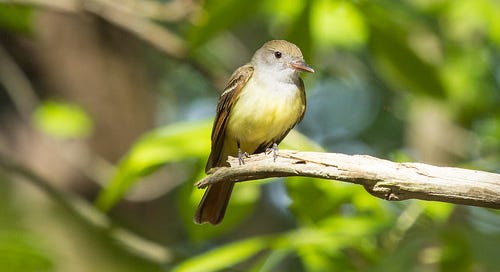



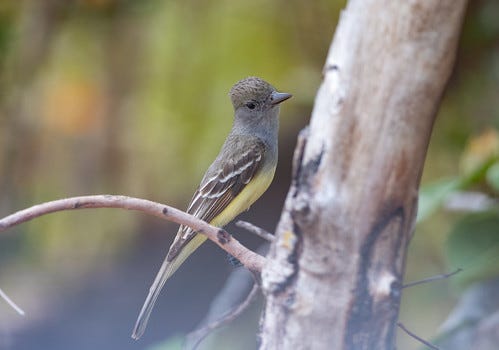
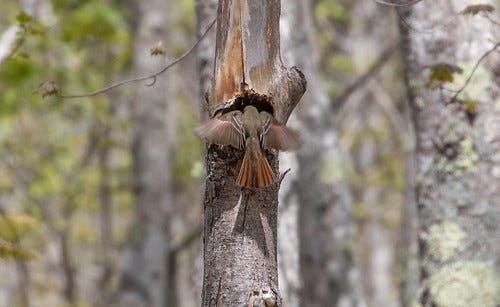
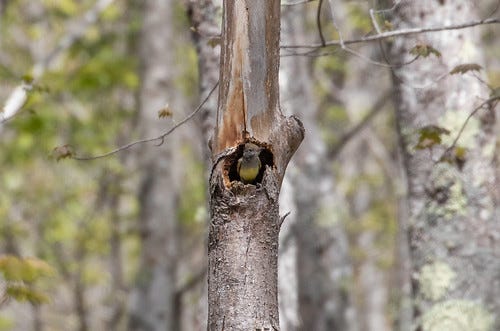

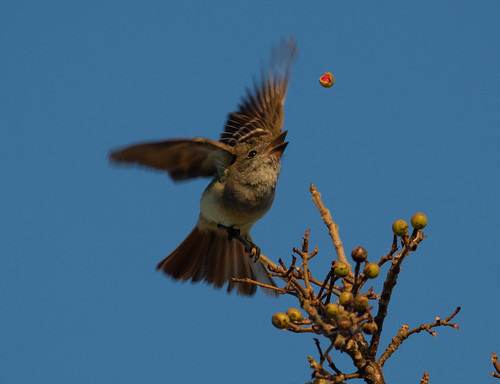
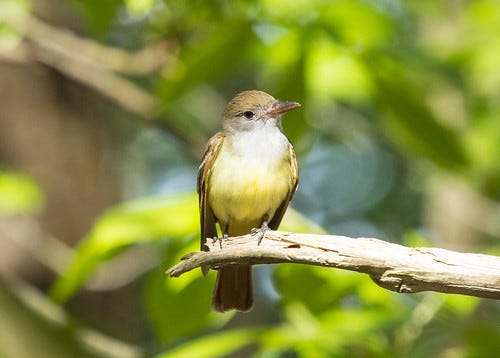
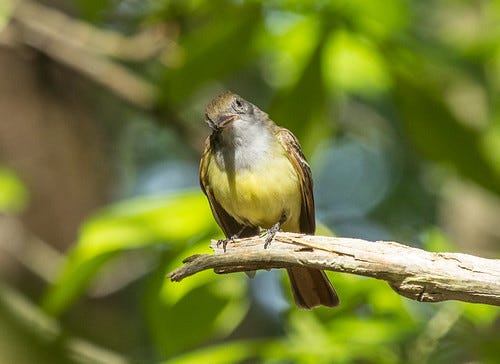
Susan Kritzik writes: "The Western equivalent is the Ash-throated Flycatcher, which also nests in cavities, including Bluebird boxes. They have a lovely (?) "kabrik!!" call.
"They have the somewhat smelly habit of incorporating coyote scat in their nests. I suppose it may repel mammalian predators or insects. It is also a bit repellent to nestbox monitors! I assume snakeskin might startle avian predators and even mammals. There’s always an evolutionary reason for these things!"